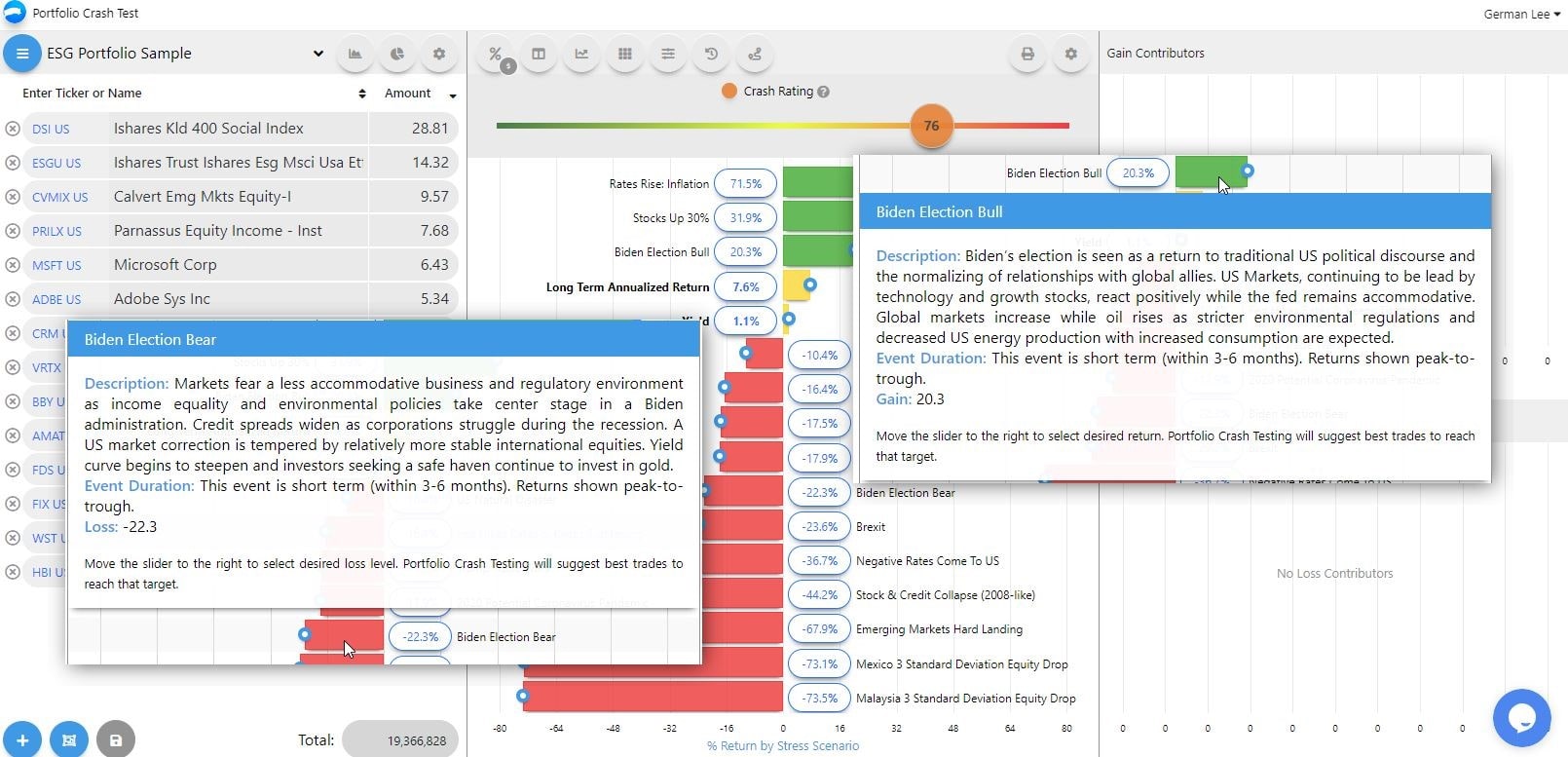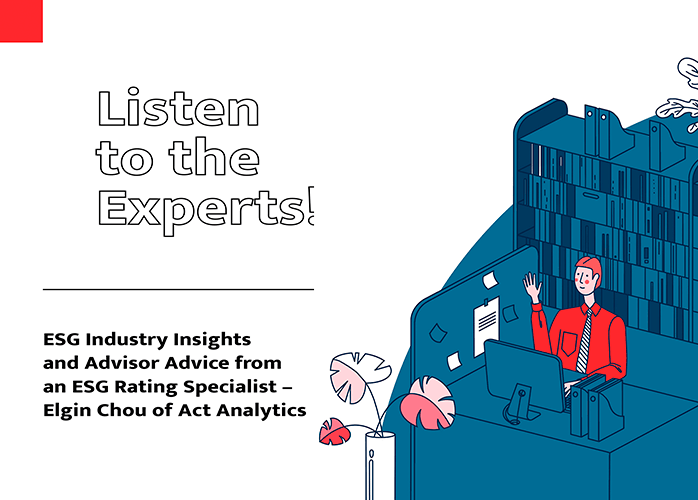
It wasn’t so long ago that we heard about the new ESG rule by DOL and in our follow-up commentary we spread the word about it in the (following article link)
How the DOL’s New ESG Rule Will Affect Retirement Advisors
A New Trend
Environmental, Social, and Governance is the hot new thing this year. Investors are increasingly applying these non-financial factors in their analysis to identify material risks and growth opportunities. Net flows to long-term responsible funds quadrupled in 2019 to $20 billion, from $5 billion in 2018, and continued to grow during the first half of 2020 to reach $21 billion. 68% of environmental, social, and governance assets in the U.S. are now in actively managed funds. Flows into ESG active equity funds during the 12 months preceding August, accounted for 10% of the average fund assets in the U.S, according to a report by Broadridge Financial Solutions.
Company-sponsored retirement plans have responded to the demand by adding these offerings. But the DOL’s rule stops short of including ESG in retirement funds, by requiring plan fiduciaries to select investments and strategies based solely on how they will affect the plan’s financial performance or pecuniary goals. It is, in some ways, a microcosm of the growing social and political divide in America. The DOL explains that fiduciaries should not sacrifice returns, increase risks, or raise the cost of a plan to pursue non-pecuniary objectives.
There is not a standardized approach to the calculation or presentation of different ESG metrics. Plan sponsors and plan advisors can employ a variety of analytical approaches and data sources to address ESG considerations. Understanding the relative merits and limitations of different metrics can help form a more complete picture of ESG risks and opportunities.
While the DOL rule may limit the ability of plan fiduciaries to use a non-pecuniary standard in adding ESG to plan menus, there is some sound reasoning behind the decision. There’s a strong argument to be made to protect passive retirement plan participants from trendy strategies that may not have the staying power of, say, investing in stalwarts such as blue-chip stocks and fossil-fuel companies. And with a Republican controlled Senate, it appears unlikely a Biden administration would be able to overturn the rule.
Around the world, investment professionals are increasingly interested in ESG investing and analysis. Governments, asset owners, and high-net-worth investors now consider the impact of ESG factors on their investments and local markets. We believe a more thorough consideration of ESG factors by plan advisors can improve the fundamental analysis that plan sponsors undertake and ultimately the investment choices they make.
A Tough Breed
As ESG investing accelerates in demand, several key trends are emerging – from climate change to social unrest. The coronavirus pandemic, in particular, has intensified discussions about how interconnected sustainability and the financial system is. This understanding can help investors determine how to integrate ESG analysis into their own investment processes, and how to do so in a manner that makes sense for them.
We have recently conducted research showing in great detail, how ESG remained resilient during the pandemic.
While the overall impact of the pandemic has undoubtedly been negative, the gravity of the crisis has actually forced the world to recognize what needs to change, putting the emphasis on making cities and communities more inclusive, resilient and safe. Industry innovations and clean energy may also grow as a result of Covid-19 as well.
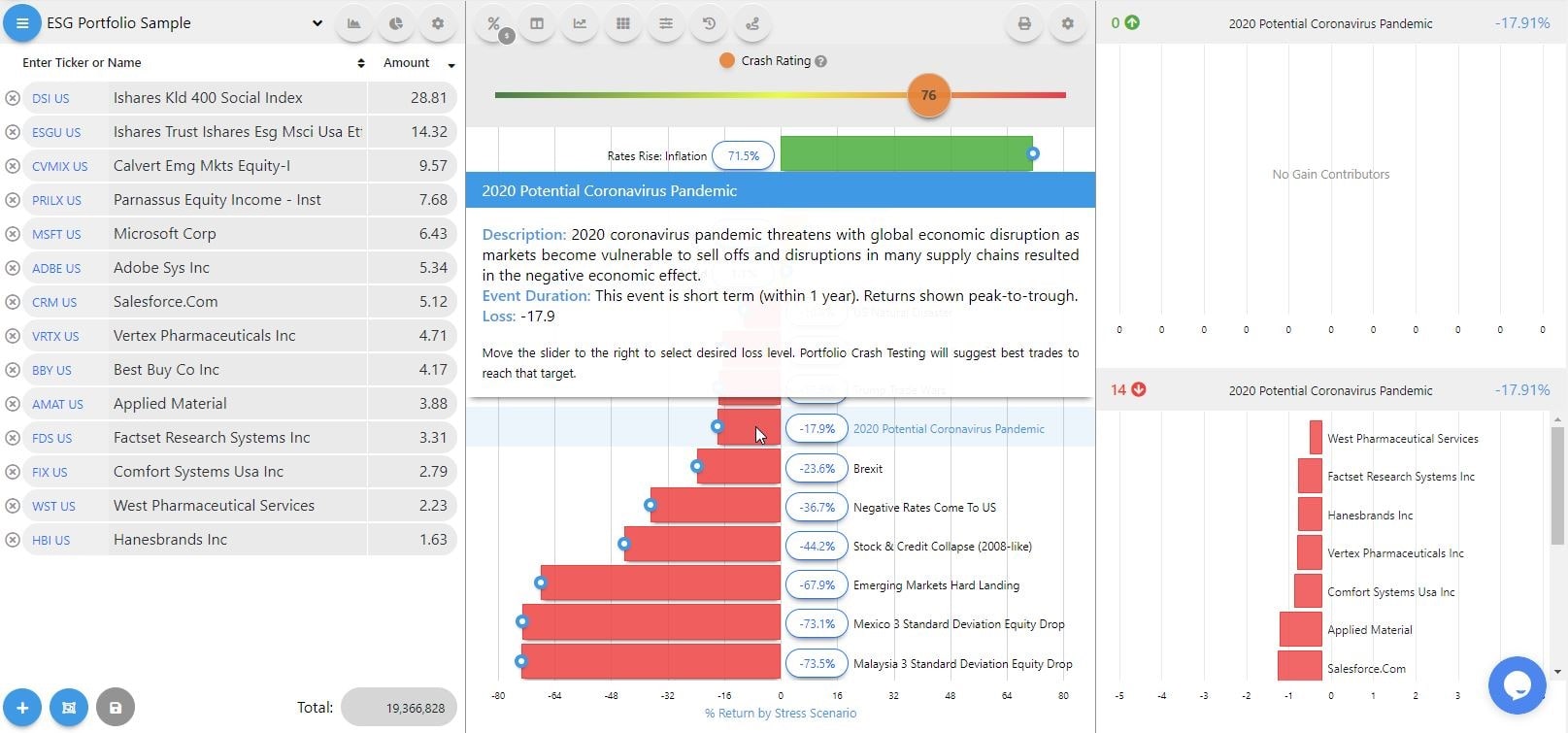 Figure 1. Portfolio Crash Test PRO analytics shows the ESG portfolio loosing -17.9% if stressed against the 2020 Potential Coronavirus Pandemic.
Figure 1. Portfolio Crash Test PRO analytics shows the ESG portfolio loosing -17.9% if stressed against the 2020 Potential Coronavirus Pandemic.
The COVID‐19 pandemic has highlighted an urgent need to consider resilience in finance, both in the financial system itself and in the role played by capital and investors in making economic and social systems more dynamic and able to withstand external shocks.
The election of Joe Biden as the next U.S. president is expected to have wide-ranging implications for investors who care about the E, S, and the G; even if Congress remains divided. The 2020 election (and what follows) is not merely important, it is life altering and generationally defining. ESG principles must be supported, adopted, and carried through as priorities to address America’s current crises and define a new paradigm.
Figure 2. One more example of the impact on the ESG portfolio as crash rated by Portfolio Crash Test PRO, showcasing Biden presidential election win Bullish and Bearish trends.
An Influenced Risk
ESG factors are expected to have a significant tail-risk impact on equity investments in the long term. Therefore, investors should strive to optimize their global equity investments and minimize exposure to ESG risks, which can be achieved by choosing equity investments, where corporate management proactively mitigates these risk factors. Companies with more free capital and internal resources have a better opportunity to address social and governance issues that impact the generalized systematic ESG scores. It is less clear how portfolios that rely on ESG ratings are affected, but, logically, certain sectors will score better based on business fundamentals. The effects amplify even more when comparing riskier portfolios, for example, when the equity allocation is even higher.
Implementing ESG at a total portfolio level is not necessarily a straightforward process, and requires consideration of a number of factors, some of which can be complex to address. Taking these considerations into account can help investors make better investment decisions and should be central to any investor’s ESG multi-asset portfolio construction process.
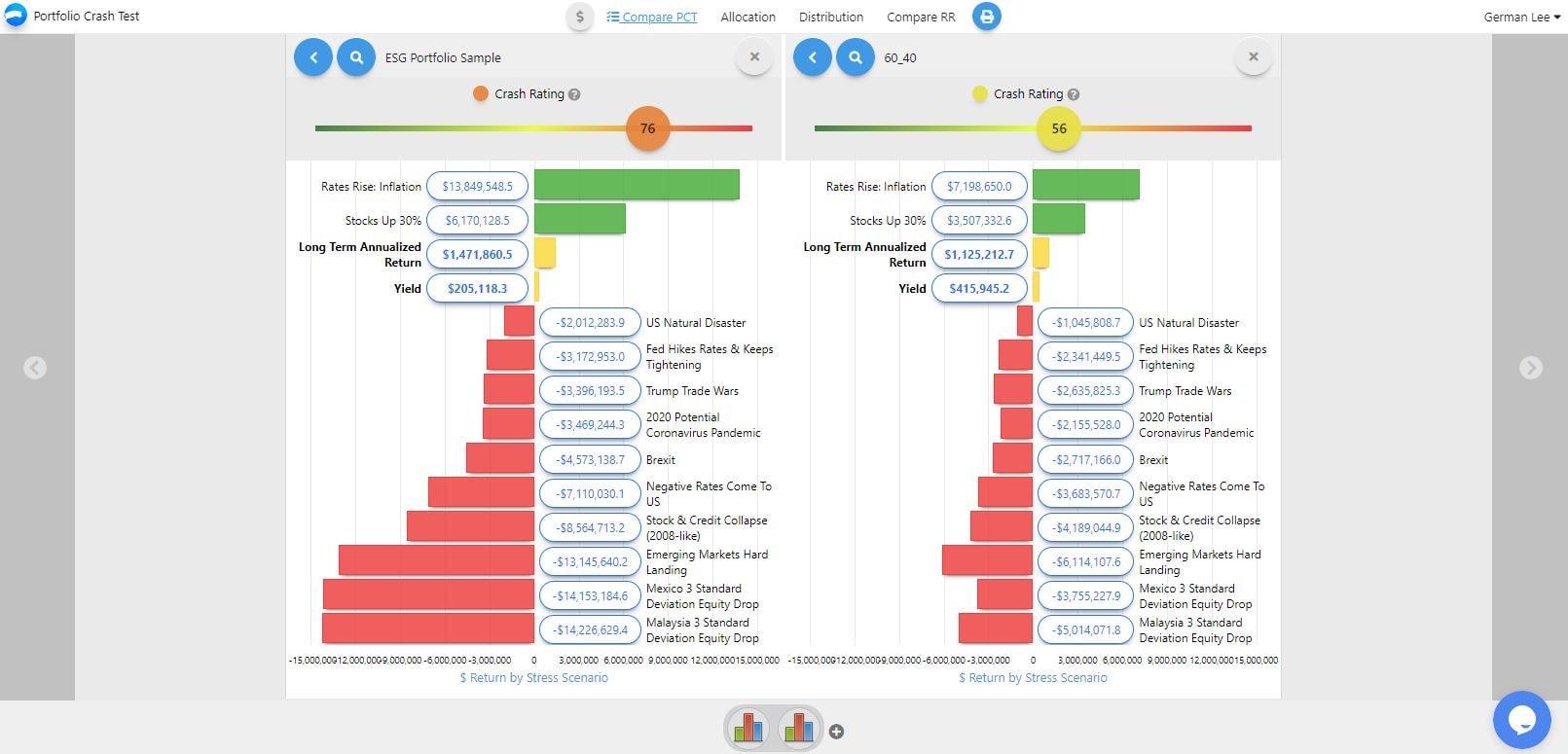 Figure 3. Portfolio Crash Test PRO Comparison view outlines the lack of diversification in the Sample ESG Portfolio that leads to a quite high Risk rating of 76 compared to the common 60/40 portfolio (Risk rating: 56).
Figure 3. Portfolio Crash Test PRO Comparison view outlines the lack of diversification in the Sample ESG Portfolio that leads to a quite high Risk rating of 76 compared to the common 60/40 portfolio (Risk rating: 56).
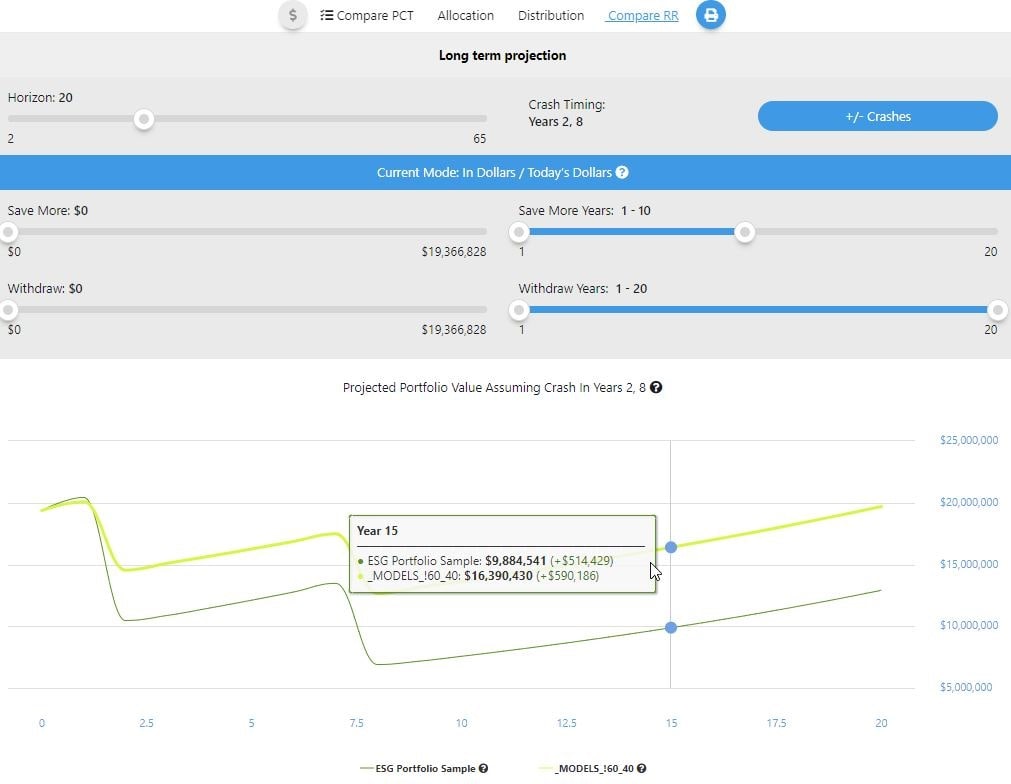 Figure 4. Portfolio Crash Test PRO RetireRisk module simulates market crashes in the years of 2 and 7 over a 20 year horizon. The Sample ESG Portfolio (dark-green line) suffers heavily from market crashes losing more than 40% of the original value while the less risky 60/40 portfolio recovers almost completely.
Figure 4. Portfolio Crash Test PRO RetireRisk module simulates market crashes in the years of 2 and 7 over a 20 year horizon. The Sample ESG Portfolio (dark-green line) suffers heavily from market crashes losing more than 40% of the original value while the less risky 60/40 portfolio recovers almost completely.
ESG is a key part of the investment industry, and we would love to hear your thoughts on ESG investing in the comments below.
Tell us what you think is the most important ESG strategy. How have your attitudes towards ESG changed in the past few years? How do you expect retirement plan investment decisions to adapt to changes in ESG investing? We would love to hear from you! Feel free to request your personal demonstration of the Portfolio Crash Testing PRO risk assessment and modeling capabilities. Ping us at clientsuccess@rixtrema.com or +7 800-282-4567 for more information. And don’t forget to follow us on LinkedIn for more tips on the RiXtrema line-up, new trend commentary, best practices and more!

